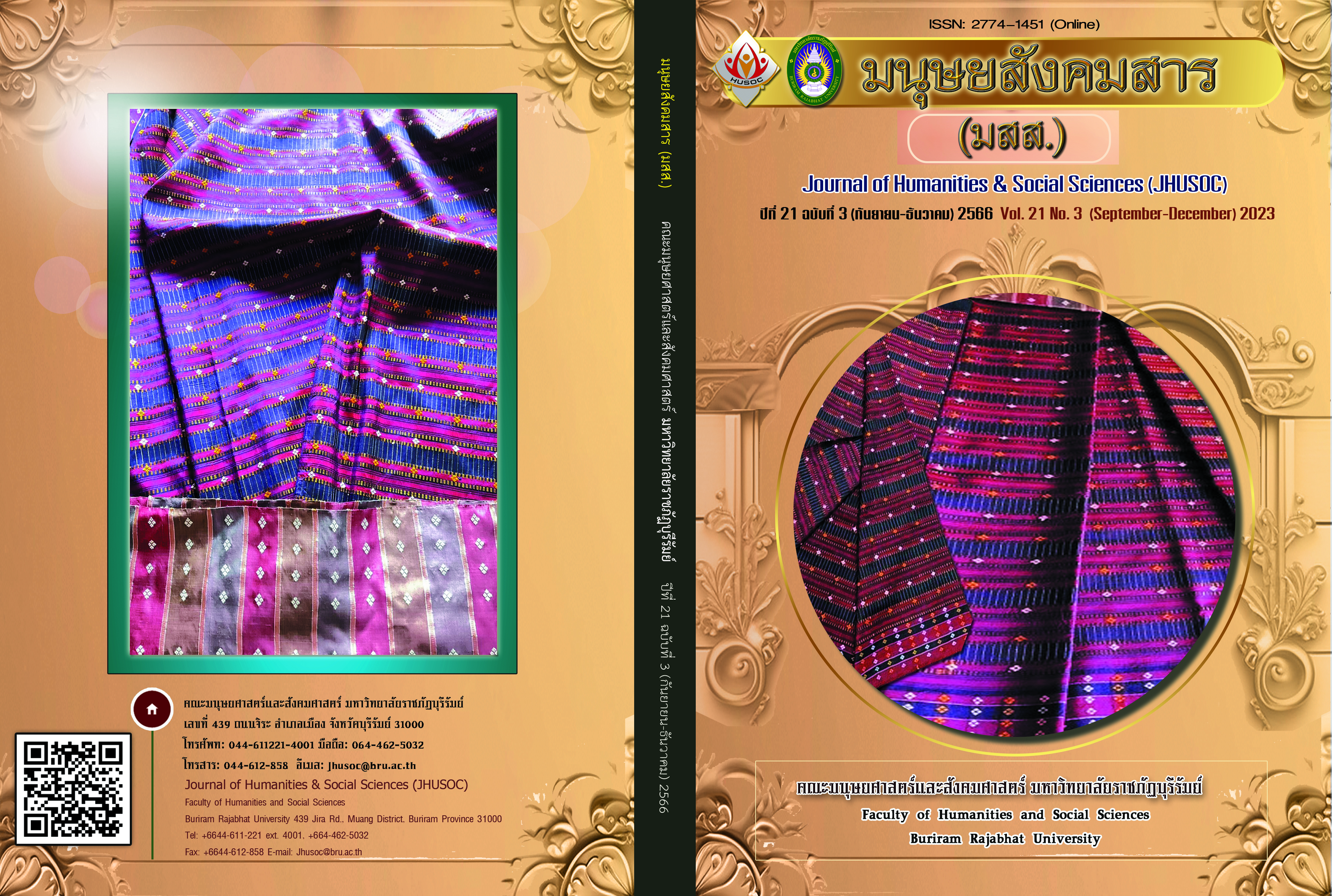ปัจจัยที่มีอิทธิพลต่อการสื่อสารพาณิชย์ดิจิทัลของผู้ใช้แรงงานในเขตชนบท
Main Article Content
บทคัดย่อ
บทความนี้มีวัตถุประสงค์การวิจัยเพื่อศึกษาการสื่อสารพาณิชย์ดิจิทัล และปัจจัยที่มีอิทธิพลต่อการสื่อสารพาณิชย์ดิจิทัลของผู้ใช้แรงงานในเขตชนบท โดยใช้ระเบียบวิจัยเชิงปริมาณด้วยวิธีวิจัยแบบภาคตัดขวาง มีกลุ่มตัวอย่าง คือ ผู้ใช้แรงงานในเขตชนบทที่มีอายุ 18 ปีขึ้นไป และมีประสบการณ์ซื้อสินค้าออนไลน์ จำนวน 1,339 คน จากชุดข้อมูลระดับย่อยของสำนักงานสถิติแห่งชาติ ซึ่งเก็บรวบรวมข้อมูลด้วยแบบสัมภาษณ์ ผู้วิจัยวิเคราะห์ข้อมูลด้วยสถิติพรรณนา และสถิติถดถอยพหุคูณเพื่อทดสอบปัจจัยที่มีอิทธิพลต่อการสื่อสารพาณิชย์ดิจิทัลของผู้ใช้แรงงานในเขตชนบท ผลการวิจัยพบว่า ผู้ใช้แรงงานส่วนใหญ่มีการสื่อสารพาณิชย์ดิจิทัลด้านการซื้อสินค้าออนไลน์ และการใช้สื่อสังคมออนไลน์ คิดเป็นร้อยละ 100 และ 97.70 ทั้งนี้พบว่า การสื่อสารพาณิชย์ดิจิทัลของผู้ใช้แรงงานในเขตชนบทได้รับอิทธิพลสูงสุดจากระดับประสบการณ์การซื้อสินค้าออนไลน์ อย่างมีนัยสำคัญทางสถิติที่ระดับ .05 โดยปัจจัยทั้งหมดสามารถอธิบายการผันแปรได้ร้อยละ 17.30 (R2 = 0.173)
Article Details

อนุญาตภายใต้เงื่อนไข Creative Commons Attribution-NonCommercial 4.0 International License.
เนื้อหาและข้อมูลในบทความที่ลงตีพิมพ์ในวารสารทดสอบระบบ ThaiJo2 ถือเป็นข้อคิดเห็นและความรับผิดชอบของผู้เขียนบทความโดยตรงซึ่งกองบรรณาธิการวารสาร ไม่จำเป็นต้องเห็นด้วย หรือร่วมรับผิดชอบใดๆ
บทความ ข้อมูล เนื้อหา รูปภาพ ฯลฯ ที่ได้รับการตีพิมพ์ในวารสารทดสอบระบบ ThaiJo2 ถือเป็นลิขสิทธิ์ของวารสารทดสอบระบบ ThaiJo2 หากบุคคลหรือหน่วยงานใดต้องการนำทั้งหมดหรือส่วนหนึ่งส่วนใดไปเผยแพร่ต่อหรือเพื่อกระทำการใดๆ จะต้องได้รับอนุญาตเป็นลายลักอักษรจากวารสารทดสอบระบบ ThaiJo2 ก่อนเท่านั้น
เอกสารอ้างอิง
Department of Business Development Ministry of Commerce. (2023). Easy online shop. Department of Business Development. [in Thai]
Dhamanitayakul, C., & Biggins, O. (2019). Conceptualizing digital citizenship for digital natives in Thailand. Journal of Communication Arts Review, 23(3), 60-73. [in Thai]
Entz, A., & Cheyjunya, P. (2023). Divides among Thai digital natives. Journal of Communication Arts Sukhothai Thammathirat Open University, 10(1), 54-67. [in Thai]
Goudeau, S., Sanrey, C., Stanczak, A., Manstead, A., & Darnon, C. (2021). Why lockdown and distance learning during the COVID-19 pandemic are likely to increase the social class achievement. Nat Hum Behav, 5(10), 1273-1281.
Harris, C., Straker, L., & Pollock, C. (2017). A socioeconomic related 'digital divide' exists in how, not if, young people use computers. PLoS ONE, 12(3), 1-13.
Helsper, E., & Eynon, R. (2013). Distinct skill pathways to digital engagement. Euro. J. Commun, 28(6), 696-713.
National Statistical Office Thailand. (2020). Household survey on the use of information and communication technology. National Statistical Office Thailand. [in Thai]
Noonin, S. (2022). Factor analysis of lifestyle of young generation in Thai rural society. Journal of Social Sciences Srinakharinwirot University, 23(1), 169-193. [in Thai]
Prensky, M. (2011). Reflecting on the myth. In M. Thomas (Ed.), Deconstructing digital natives: Young people, technology, and the new literacies. Routledge.
Reynolds, T., & Stryszowski, P. (2014). Skills and jobs in the internet economy. OECD Publishing.
Ribble, M. (2015). Digital citizenship in schools: Nine elements all students should know (3rd ed.). International Society for Technology in Education.
Sangthongjai, S., & Taiphapoon, T. (2019). The influence of marketing mixed factors on Thai digital natives’ decision behavior towards food delivery applications in Bangkok. Journal of Public Relations and Advertising, 12(1), 13-31. [in Thai]
Strauss, W., & Howe, N. (1991). Generations. Harper Perennial.
Tanyong, P., & Pongsittikanchana, C. (2023). Components of trust of online consumers in Thailand. Journal of Multidisciplinary in Humanities and Social Sciences, 6(3), 1635-1652. [in Thai]
van Deursen, A. J., & van Dijk, J. A. (2014). The digital divide shifts to differences in usage. New Media & Society, 16(3), 507-526.
Weltevreden, J., & Rotem-Mindali, O. (2009). Mobility effects of b2c and c2c e-commerce in the Netherlands: A quantitative assessment. Journal of Transport Geography, 17(2), 83-92.


